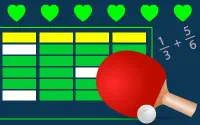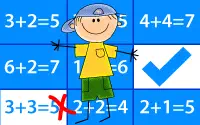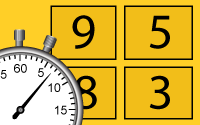


Prime factors
for 4th grade
Identify the prime factors of numbers up to 105
Home / 4th grade / Multiply + Divide / Prime factors / Prime factors
Identify prime factors
Prime numbers are special numbers that can only be divided by 1 and the number itself without leaving a remainder. In other words, they have exactly two factors. So the number 3 is a prime number because it is divisible only by 3 and 1. The first few prime numbers are 2, 3, 5, 7, 11, 13, 17, and 19. Many numbers are not prime, they are composite numbers - numbers that have more than two factors. These numbers can be divided by different numbers, not just 1 and themselves. For example, 4 can be divided by 1, 2, and 4.
Prime factorization is a way to break down a composite number into smaller pieces that are all prime numbers. These smaller prime numbers are called "prime factors". To work out the prime factors of a number, start with the smallest prime number, 2, and see if it divides the given number without leaving a remainder. If it does, write down the number 2 and the result of the division. If it doesn't, move on to the next smallest prime number, 3, and try again. Repeat this process until you've found all the prime factors.
What are the prime factors of 10?
- First, divide 10 by the smallest prime number, which is 2.
- 10 ÷ 2 = 5. The result is another prime number, 5.
- So, the prime factors of 10 are 2 and 5 (10 = 2 x 5).
The prime factors of 10 are 2, 5
What are the prime factors of 60?
60 can be divided by 2 without leaving a remainder: 60 ÷ 2 = 30. Write down 2 and 30.
Now, check if the result (30) can be divided by 2 without leaving a remainder: 30 ÷ 2 = 15. It can, so write down 2 and 15.
The result (15) cannot be divided by 2, so move on to the next smallest prime number, 3. Check if 15 can be divided by 3 without leaving a remainder: 15 ÷ 3 = 5. It can, so write down 3 and 5.
The result (5) is a prime number, so we've found all the prime factors:
The prime factors of 60 are 2, 3, 5
In this topic you are asked to find the prime factors of numbers from 6 to 100.
Related topics
Below is a table showing the first 6 question answer pairs for the topic "Prime factors" as used in the lessons for this topic. Our games and tests for the topic use these 6 items plus 10 additional question answer pairs.
The topic "Prime factors" is in the category Multiply + Divide for 4th grade (ages 9 to 10).
Revise 'Prime factors' with one of our games for 4th grade
Home / 4th grade / Multiply + Divide / Prime factors / Prime factors
Each of our math topics for elementary are made up of between 6 and 20 question and answer pairs (both the written form and a robot voice speaking those questions and answers). Each topic can be used with all the activities on the site.
Counting * Comparing numbers * Pattern * Place value * Addition * Subtraction * Add + Subtract * Multiplication * Division * Multiply + Divide * Fractions * Decimals * Percentages * Measurements * Shapes * Position + Direction * Statistics * Algebra *




















